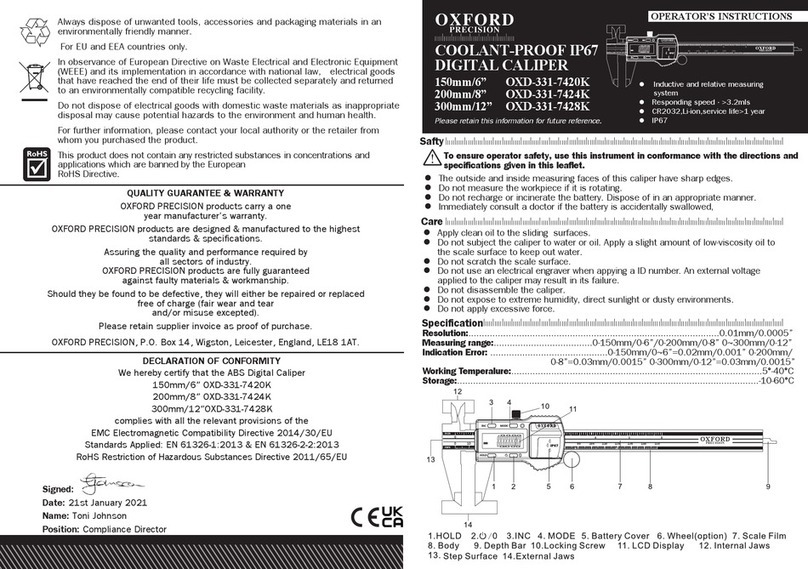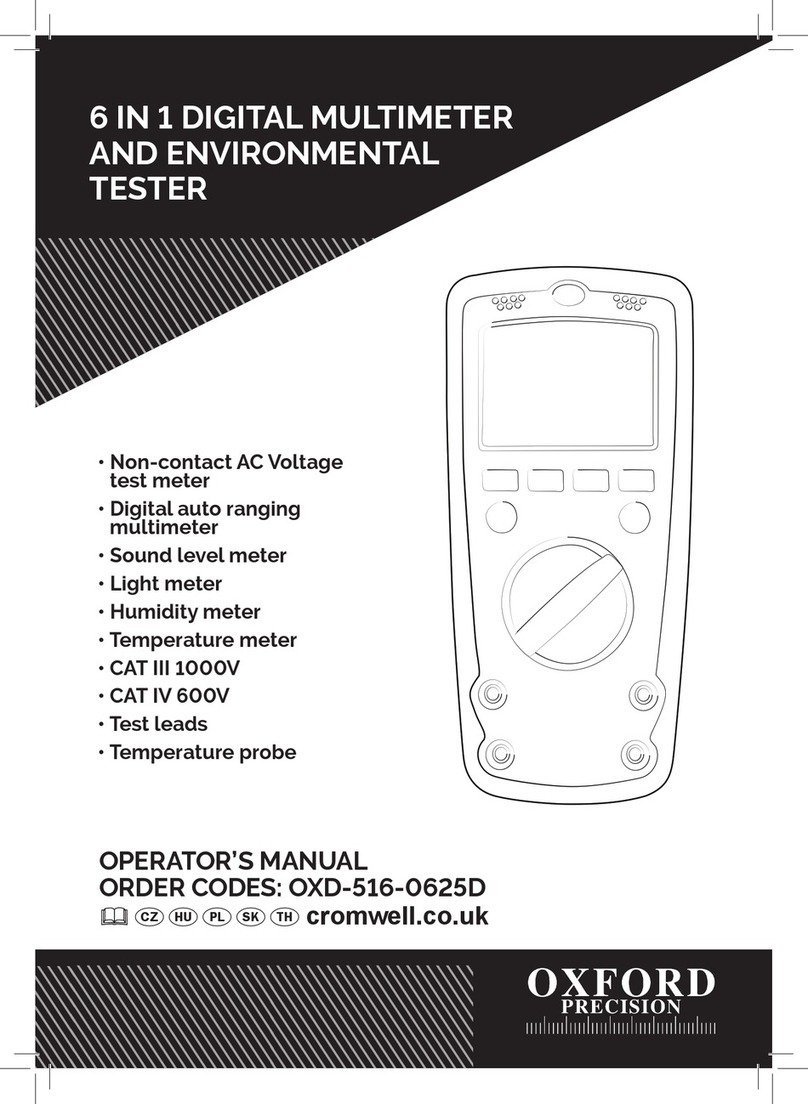
8
Continuity test
I
3
bl
OS
-
f
CE
I
Figure 1
4
Q
(See Figure 7)
I
3
bl
OS
-
f
CE
I
Figure 1
4
Q
Always turn the power off and discharge
fully all capacitors before measuring
continuity.
1. Insert the black test lead into the COM
input port and the red test lead into the
“
I
3
bl
OS
-
f
CE
I
Figure 1
4
Q
” input port.
2. Turn the dial function switch to “
I
3
bl
OS
-
f
CE
I
Figure 1
4
Q
”,
press the “SELECT” button twice and
“
I
3
bl
OS
-
f
CE
I
Figure 1
4
Q
” will appear on the LCD.
3. Short the tips of the test leads together
and conrm the LCD screen shows near
zero and the Clamp Meter will emit a tone.
4. Place the red and black test leads at
both the positive and negative points
to be measured. The buzzer will sound
when the resistance is less than 10W,
between 10W and 100W there will
either be a tone or silence and above
100W there will be silence.
2000A AC Current measurement 2000
(See Figure 8)
I
3
bl
OS
-
f
CE
I
Figure 1
4
Q
Never exceed AC 2000A when measuring
AC current.
Never measure current using the test probes.
Never attempt to measure a large current
continuously for a long time as it may
cause over heating to the magnetic
circuits and therefore affect accuracy.
1. Turn the dial selection switch to 2000
2. Open the clamp head, insert the wire to
be measured and close the clamp head.
3. Keeping the wire in the centre
position of the clamp head, read the
measurement in the display (mean
value response).






























